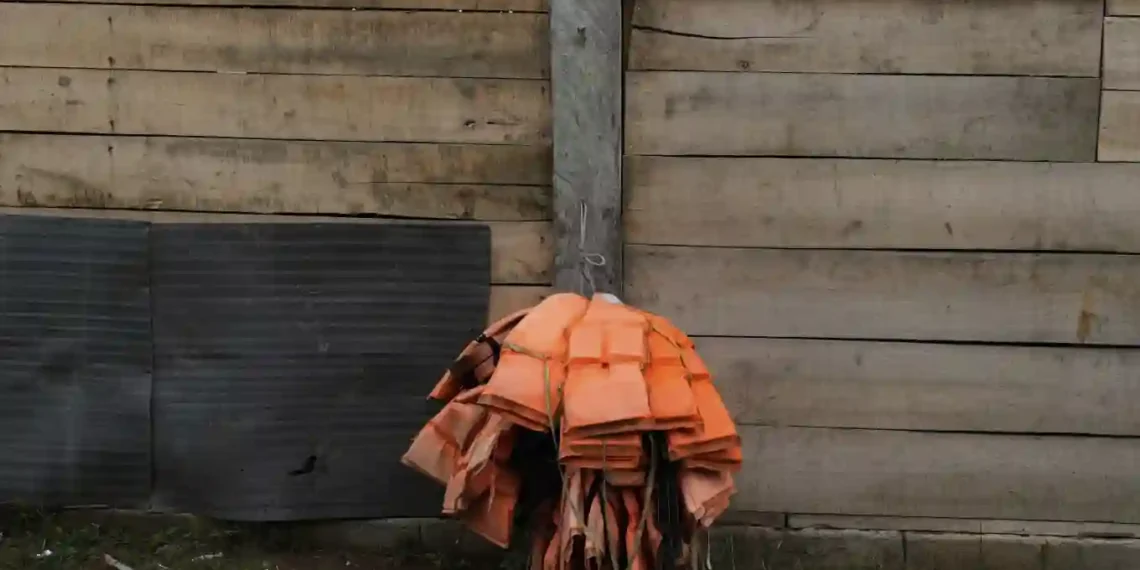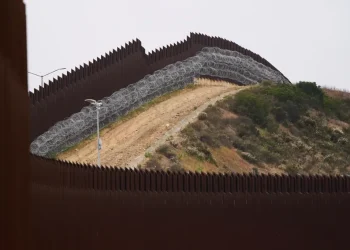A Jungle Route That Fueled Prosperity Now Faces Economic Collapse as Migration Slows
VILLA CALETA, Panama (AP) — A remote stretch of jungle, once bustling with migration and economic activity, now faces a sharp downturn as migration slows drastically under new policies.
For years, the Darien Gap, a treacherous, nearly impenetrable rainforest along Panama’s border with Colombia, served as a migratory highway. More than 1.2 million migrants braved this dangerous path, seeking a better life in the United States. The area saw an economic boom, as communities profited from transporting these migrants, selling goods, and providing essential services.
But that boom has quickly vanished. After Donald Trump’s administration imposed stricter asylum policies, migration through the Darien Gap has plummeted. The once-thriving economy that relied on this flow of people has now collapsed, leaving locals scrambling for new ways to survive.
Luis Olea, 63, a former boat pilot who ferried migrants across the Darien River, remembers the prosperity of those days. He installed solar panels, bought a television, and even improved his home, all with the money he earned transporting migrants.
“Before, we lived off of the migration. But now that’s all gone,” Olea says, standing in his now-quiet home in Villa Caleta.
During the height of migration, boat pilots like Olea made up to $300 a day, a stark contrast to the $150 a month they once earned from growing crops like plantains. Towns along the river began to rely almost exclusively on the income from migration, abandoning their agricultural work.
However, when migration slowed following Trump’s immigration crackdown, the local economy began to collapse. Migrants no longer flood the region, and businesses that once thrived are now struggling to survive.
Manuel Orozco, director of the migration program at the Inter-American Dialogue, calls it “like discovering a gold mine, but once it dries up, you’re left with nothing.”
Many locals like Olea are left with few options. Olea has returned to growing plantains, but it will take at least nine months before he can see any income. His boat sits unused, and there’s little market for it.
Pedro Chami, 56, another former boat pilot, also faces an uncertain future. He used to make steady income transporting migrants, but now he carves wooden pans and hopes for a lucky break.
“Before, I had $200 a day without fail. Now, I don’t even have a cent,” Chami says.
At the height of the migration crisis, an estimated 2,500 to 3,000 people crossed the Darien Gap every day. But now, that number has dwindled to just 10 people per week. As a result, some Venezuelan migrants are even traveling in the opposite direction, returning home along Panama’s Caribbean coast.
The Gulf Clan, a criminal group that once profited from transporting migrants north, has now begun scouting the coast to see if they can profit from the reverse migration.
One of the hardest-hit areas is Lajas Blancas, a port town that once bustled with activity as migrants arrived after their harrowing jungle trek. Shops selling food, SIM cards, and other necessities for the journey have shut down. What was once a thriving community now feels like a ghost town.
Zobeida Concepción, 55, is one of the few who hasn’t abandoned the town. Her family once sold food and drinks to migrants, earning enough to buy a new bed, washing machine, and even three freezers to store supplies. But with the sudden drop in migration, she’s uncertain what’s next.
“When Donald Trump won, everything came to a screeching halt,” Concepción says. Despite the downturn, she’s holding on to her savings—and her freezers—hoping that future opportunities will come with a change in U.S. leadership.
For communities like Villa Caleta and Lajas Blancas, the loss of migration income has been devastating. Many are left without a market to sell their goods and with no clear path forward.
“There’s no market anymore,” says Olea, who once profited from the migration but now finds himself back in the fields growing crops. It’s a stark reminder that the once-promising boom brought by migration has disappeared as quickly as it arrived.
As the region adapts to this new reality, locals are left to rebuild and reimagine their future—hoping that new opportunities, whether in migration or elsewhere, will eventually bring prosperity back to this remote stretch of Panama.
This article was rewritten by JournosNews.com based on verified reporting from trusted sources. The content has been independently reviewed, fact-checked, and edited for accuracy, neutrality, tone, and global readability in accordance with Google News and AdSense standards.
All opinions, quotes, or statements from contributors, experts, or sourced organizations do not necessarily reflect the views of JournosNews.com. JournosNews.com maintains full editorial independence from any external funders, sponsors, or organizations.
Stay informed with JournosNews.com — your trusted source for verified global reporting and in-depth analysis. Follow us on Google News, BlueSky, and X for real-time updates.














